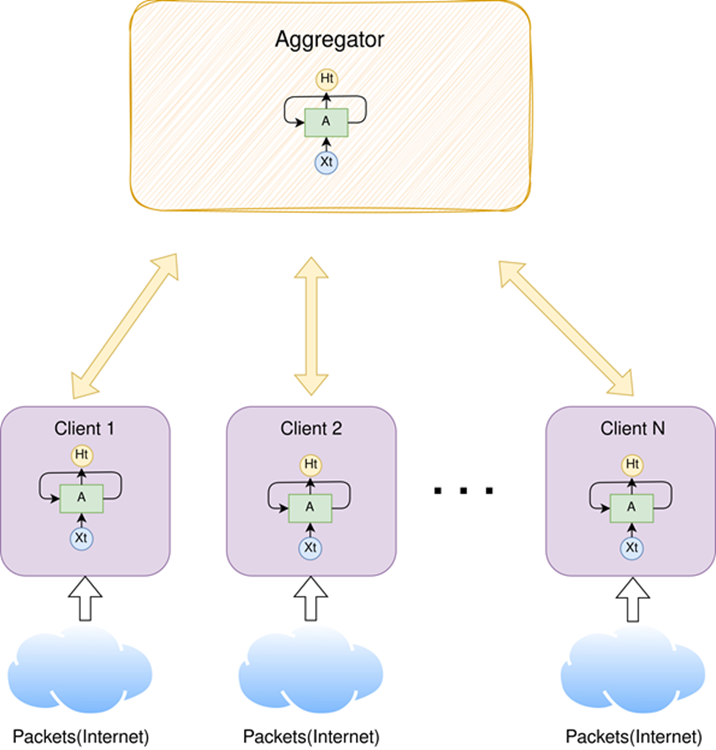Author: – SYNELIXIS –
CyberSEAS project has uncovered a comprehensive range of vulnerabilities, related to EPES, with a significant portion of them falling under the umbrella of cybersecurity, including well-known network attacks like, DDoS and Man in the Middle.
To address these concerns, Synelixis Solutions S.A. has developed an Intrusion Detection System (IDS) that actively monitors and understands network traffic using Machine Learning. This IDS generates alerts, whenever it detects malicious traffic. Unlike conventional IDS modules, SYN approach tackles the classification problem of IDS using a predictive, time-series-based approach, enabling proactive action, rather than reactive response. Leveraging previous network packets, we are able to predict the maliciousness of upcoming packets, allowing the system to implement proactive security measures.
Furthermore, this approach employs Federated Learning, which ensures that the training process occurs in a distributed manner. This integration enhances privacy protection, as a robust privacy-preserving methodology has been devised to counter common attacks that may occur within this architectural framework.
Federated learning is a machine learning technique that allows multiple devices or parties to collaboratively train a model, without sharing their raw data. Instead, the model is trained locally on each device, using their respective data, and only the updated model parameters are shared and aggregated, to improve the overall model. This decentralized approach helps preserve data privacy and security, while enabling the collective learning from a distributed network of devices.
To battle network attacks in EPES, Synelixis Solutions S.A. has developed an ML on IDS module operating in a proactive manner. This innovative system takes a departure from traditional approaches that rely on fixed rules or historical attack comparisons. Instead, it harnesses the power of machine learning and time-series prediction, to identify potential threats in network traffic. By converting conventional IDS datasets into time-series formats, this IDS employs predictive models to proactively anticipate and isolate malicious packets, before they can infiltrate and compromise the system. This groundbreaking approach marks a significant advancement in cybersecurity, promising enhanced protection against evolving threats and enabling the implementation of proactive security measures.




